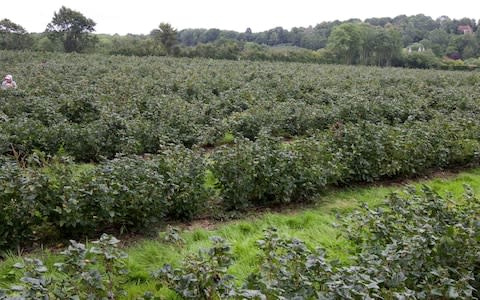Scientists develop 'Ribena' hair dye using skins from left-over blackcurrants

Scientists have developed a safe commercial hair dye using blackcurrant waste left over from the production of the fruit drink Ribena.
A team at Leeds University has created the hair dye and are ready to launch it on the 10 billion dollar world-wide hair dye market by the end of the summer.
Around 90 per cent of the blackcurrants grown in the UK, 12,000 tons annually, are used by the makers of the fruit drink and thousands of tons of blackcurrant waste is left over when the fruit have been processed.
The patented hair dyeing technology that has been developed provides intense reds, purples and blues on hair that, when combined with a natural yellow, could provide a wide range of colours - including browns.
Colour chemist Dr Richard Blackburn, who helped to develop the “Ribena” hair dye, says it should be welcomed by consumers that are concerned about ingredients that are found in commonly-used synthetic hair dyes, which are derived from petrochemicals, and can trigger severe allergic reactions.

"Anthocyanins are pigments that provide colour to most berries, flowers, and many other fruits and vegetables,” he said.
“They are non-toxic, water-soluble and responsible for pink, red, purple, violet, and blue and colours and are widely used as natural food colorants all over the world.
"We knew they bound strongly with proteins - hair is a protein - so we thought if we could find an appropriate source of these natural colours, we might be able to dye hair."
The British blackcurrants used to make Ribena are harvested in late summer and pressed for juice.

Professor Rayner, who also worked to develop the hair dye, said: "After being pressed, the skins remain as a waste product.
"They have very high concentrations of anthocyanins, and represent a sustainable supply of raw material because of how much blackcurrant cordial we drink."
The researchers are commercialising their patented technology through a University of Leeds spinout company, Keracol.
Keracol has already launched a sustainable skincare range made using the waste skins from the production of Marks & Spencer wines.

